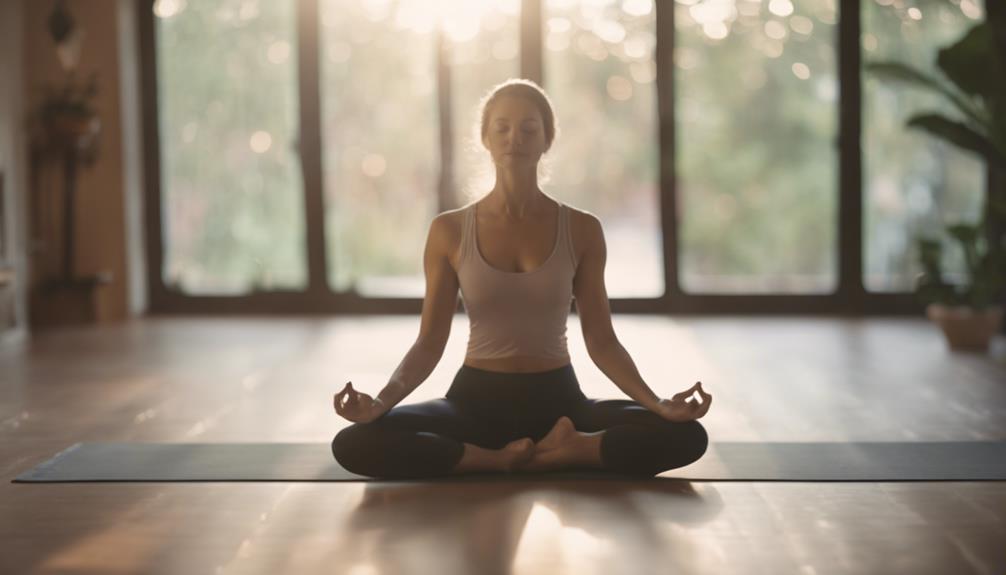Iyengar Yoga, founded by B.K.S. Iyengar, is famous for its emphasis on precision and alignment. Among its unique features, the use of wall ropes stands out as an innovative tool that can transform your practice. Wall ropes are designed to provide support and enhance various postures, allowing practitioners to explore deeper stretches and attain greater alignment. In this article, we’ll dive into the world of Iyengar Yoga wall ropes, exploring their benefits, how to use them, and tips for incorporating them into your practice.
What Are Iyengar Yoga Wall Ropes? A Quick Overview
Iyengar Yoga wall ropes are specialized equipment attached to the wall, used to aid practitioners in various asanas (yoga poses). These ropes facilitate support and stability, allowing yogis to explore postures that may otherwise be challenging. They are typically made from strong, durable materials and can be adjusted to different heights and lengths, making them versatile for a range of poses. The premise is simple: by anchoring oneself to the wall using these ropes, practitioners can experience a greater sense of balance and alignment.Yoga Stevens Point
Wall ropes are distinctive to Iyengar Yoga, where the focus is on precision in alignment and the therapeutic aspects of yoga. They act as an extension of your body, helping you to maintain proper form while also allowing for deeper exploration of different poses. The ropes can also help highlight areas where your body may be less engaged, making them valuable for both beginners and experienced yogis alike.
The Benefits of Using Wall Ropes in Iyengar Yoga
One of the primary benefits of using wall ropes is that they provide support in poses that may otherwise be difficult to achieve. For instance, if you’re working on a challenging inversion or backbend, the ropes can help distribute your weight evenly, reducing strain on your muscles and joints. This is especially beneficial for beginners or those recovering from injuries, as the ropes allow you to focus on alignment without the fear of falling or losing balance.
Additionally, wall ropes can enhance your overall practice by encouraging deeper stretches and greater flexibility. They offer a unique way to explore poses by allowing you to engage in a variety of angles and extensions. Whether you’re hanging, leaning, or using the ropes to stabilize your body, they can help you reach new depths in your practice that you might not have achieved without them.
How Wall Ropes Enhance Your Yoga Practice
Wall ropes can act like a personal trainer during your yoga routine. They guide your body into alignment, reminding you to engage specific muscles and maintain proper posture. This is especially useful in complex poses, where a small adjustment can make a significant difference in how the pose feels and functions. By using wall ropes, you can fine-tune your alignment, helping to deepen your understanding of each posture’s mechanics.
Moreover, they can also foster a greater sense of body awareness. As you work with the ropes, you begin to identify your strengths and weaknesses within various poses. This knowledge can be incredibly empowering, allowing you to make informed adjustments and progress in your practice more effectively. The ropes essentially provide a feedback mechanism, allowing you to learn and grow at your own pace.
Different Types of Wall Ropes and Their Uses
Iyengar Yoga wall ropes come in various types, each serving specific purposes. Some ropes are designed for support during standing poses, while others may be more suitable for inversions or backbends. For example, longer ropes can be used for poses like Halasana (Plow Pose), where you can hang off the wall to deepen the stretch in your spine. Shorter ropes, on the other hand, might be tailored for seated postures or to stabilize your legs in a forward bend.
Additionally, some wall rope setups include multiple attachment points, allowing for more versatility in your practice. You can adjust the height of the ropes depending on the pose you’re working on, providing a personalized touch to your practice. This adaptability makes wall ropes suitable for practitioners of all levels, as they can be modified to match your individual needs and goals.
Setting Up Your Own Wall Rope Station at Home
If you’re inspired to integrate wall ropes into your yoga practice, setting up a station at home is easier than you might think. First, you’ll need a sturdy wall that can support the weight of the ropes and your body. You’ll also require the appropriate hardware, such as hooks or anchors, that are strong enough to secure the ropes in place. You can purchase wall rope kits online or create your own setup using high-quality materials.
When setting up your wall rope station, consider the space available and the height at which you want to install the ropes. It’s essential to ensure that there’s enough room for you to practice safely without obstacles around you. Once the ropes are installed, take the time to familiarize yourself with their uses and how they can enhance your practice. A little creativity goes a long way, so don’t be afraid to experiment with different poses and techniques!
Key Poses to Try with Iyengar Yoga Wall Ropes
There are numerous poses you can explore using wall ropes, making them a fantastic addition to your practice. One popular option is Adho Mukha Svanasana (Downward-Facing Dog), where you can use the ropes to support your hips and improve alignment. Another great pose is Setu Bandhasana (Bridge Pose), in which you can anchor your shoulders and focus on lifting through the chest without straining the back.
For those looking to deepen their backbends, Urdhva Dhanurasana (Upward Bow Pose) is a fantastic choice. By using wall ropes, you can practice this challenging pose with added support, helping you to open up the front of your body while safely engaging your spine. Other poses like Paschimottanasana (Seated Forward Bend) and Viparita Karani (Legs-Up-the-Wall Pose) are also excellent for using wall ropes to enhance your experience and comfort.
Common Mistakes to Avoid with Wall Ropes
When using wall ropes, it’s easy to fall into some common pitfalls that can hinder your practice. One mistake is relying too heavily on the ropes for support instead of engaging your muscles. While the ropes are there to assist you, it’s crucial to maintain an active connection with your body to fully benefit from the poses. Focus on finding a balance between using the ropes for support and relying on your own strength.
Another frequent error is misaligning your body while using the ropes. It’s essential to pay attention to how the ropes are positioned and ensure that they’re not pulling you into a position that compromises your alignment. Always be mindful of your body’s natural curves and structures, and make necessary adjustments to avoid strain or injury. Remember, the ropes are there to enhance your practice, not to dictate it.
Tips for Beginners Using Wall Ropes in Yoga
As a beginner, it’s important to approach wall ropes with curiosity and patience. Start with simpler poses before advancing to more complex ones. Familiarize yourself with how the ropes work and how they can support your body without pushing you beyond your limits. It’s best to practice under the guidance of an experienced instructor who can provide feedback on your alignment and technique.
Additionally, remember that yoga is a personal journey, and everyone’s body is different. Use the wall ropes to explore your flexibility and strength at your own pace. If you find a particular pose challenging, don’t hesitate to take a break or modify it as needed. The goal is to feel comfortable and supported, so listen to your body and enjoy the process of discovery.
How to Care for Your Iyengar Yoga Wall Ropes
Maintaining your wall ropes is essential for ensuring their longevity and safety. Regularly inspect the ropes for any signs of wear or fraying. Since they’re typically made of durable materials, they can last a long time with proper care. However, if you notice any damage, it’s crucial to replace them before using them again. Safety should always be your top priority.
Additionally, keep the area around your wall ropes clean and free from clutter. Dust and debris can accumulate over time, potentially affecting the ropes’ grip and your overall practice. You can gently wipe down the ropes with a damp cloth to keep them fresh. Proper storage is also important; avoid crushing or tangling the ropes when they’re not in use to maintain their integrity.
Incorporating Iyengar Yoga wall ropes into your practice can elevate your experience, helping you achieve greater alignment, strength, and flexibility. As you explore the unique benefits that these ropes provide, you’ll discover new depths to your asanas and enhance your overall journey on the mat. Whether you’re a beginner or an experienced practitioner, wall ropes offer a supportive and engaging way to deepen your practice. So, set up your station, grab those ropes, and let your yoga journey flourish!


